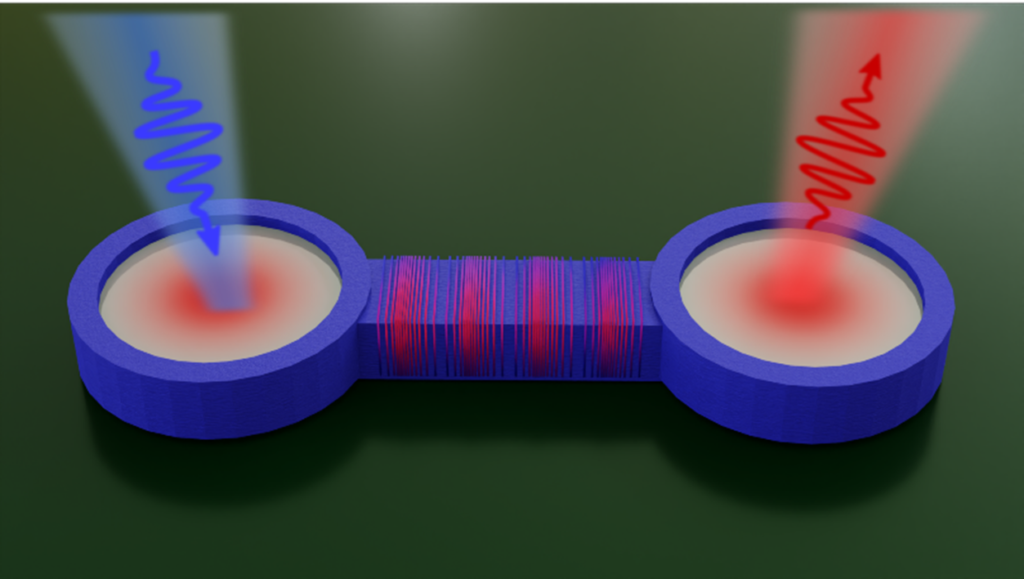High-frequency acoustic phonons break the paradigm of “bad guys” in solid-state physics, and take the lead in revolutionizing nanotechnology.
Nanophononics, a rapidly developing field of nanotechnology, is the study of acoustic phonons – ultrahigh-frequency acoustic vibrations of atoms in a lattice – at the nanoscale. These vibrations are generally not well seen in solid-state physics because they are considered as a source of decoherence in electronic and quantum systems. However, recent developments in the field have brought hypersound (above 1 GHz) to the spotlight. The acoustic waves modulate the physical properties of a solid-state system that depends on the relative position of the atoms, and therefore, they have strong interaction with other excitations at the nanoscale, e.g., electrons, photons, and magnons. The engineering of acoustic phonons and their interactions has the potential to revolutionize a wide range of industries, including materials science, optoelectronics, and quantum technologies.
A team of researchers at the Centre de Nanosciences et de Nanotechnologies – C2N (CNRS, Universite Paris-Saclay) led by Dr. Daniel Lanzillotti-Kimura presented a perspectives paper in Applied Physics Letters (selected by the editor to the Journal’s categories Featured, Scilight and as the Issue’s cover), that emphasizes the cutting-edge research on the field. “In this perspective, we have highlighted some of the recent findings on the manipulation and control of high-frequency acoustic phonons and their interactions using a variety of nanostructures”, said Daniel Lanzillotti-Kimura. The authors are also willing to attract a broader audience to the field. “We certainly believe that with this perspective we will be able to draw the attention of the scientific community towards the potential of high-frequency acoustic phonons in the GHz range”, completes.
The authors are optimistic that, by addressing some open challenges of the field, such as the lack of standard transducers for the efficient control of the interactions of phonons with other excitations, a bunch of technological applications will take advantage of the nanophononics fields. “The fact that we can manipulate and engineer acoustic waves of a few nanometers wavelengths is amazing, and opens infinite possibilities”, said Priya. They have traced a roadmap of the promising pathways of these emerging fields, such as reconfigurable sensing devices, data processing, and quantum communication. “We see three exciting roads from here, gain control over the propagation of phonons to interface different solid-state systems, start playing with dynamic nanoacoustic structures responsive to external stimuli, and increase the frequency of our devices to a few tens of gigahertz to enter into the quantum regime at standard cryogenic temperatures”, completes Lanzillotti-Kimura.
Source: “Perspectives on high-frequency nanomechanics, nanoacoustics, and nanophononics,” by Priya Priya, Edson Rafael Cardozo de Oliveira, and Norberto Daniel Lanzillotti-Kimura, Applied Physics Letters (2023).
The article can be accessed here.
